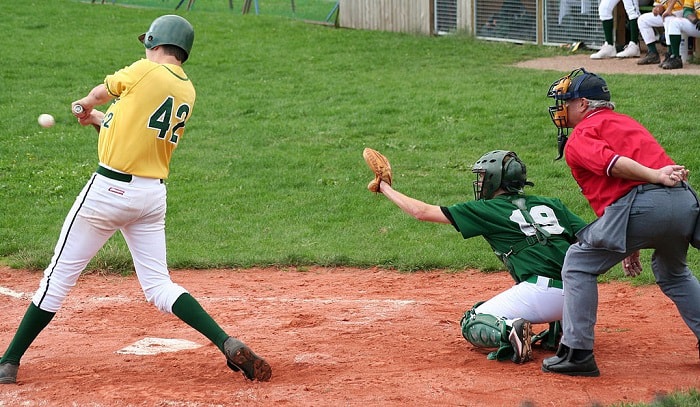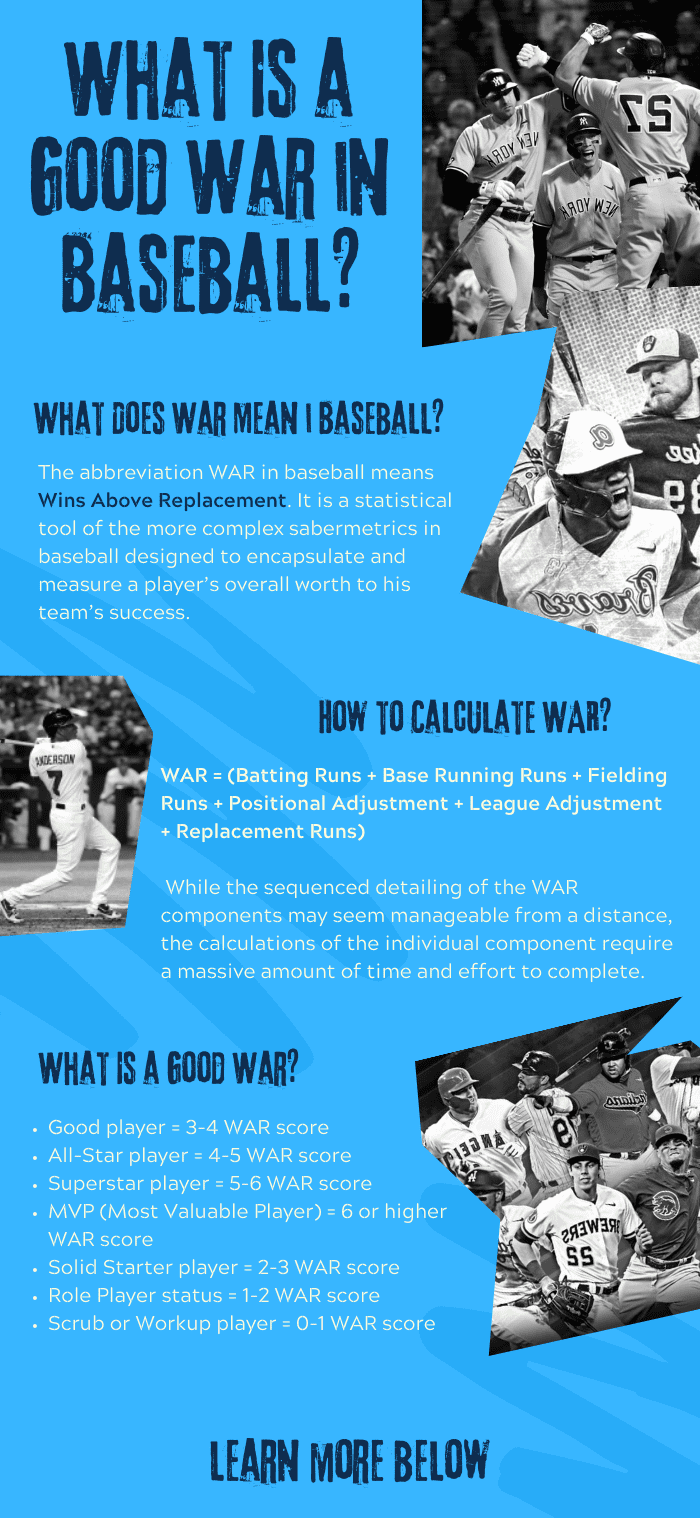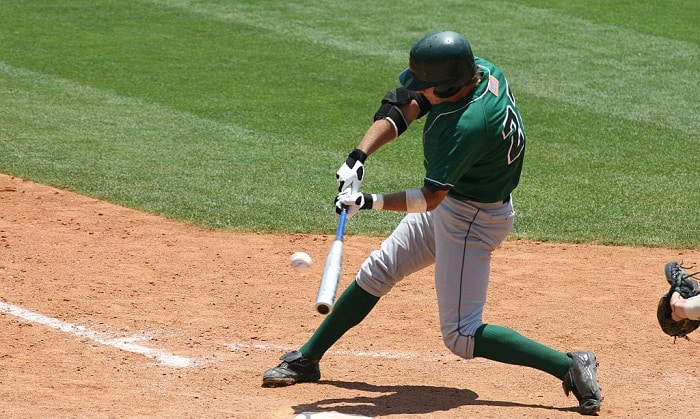Baseball is undoubtedly a game of statistics. More than half of what makes the game exciting is the propensity for statistical machinations. Besides the thrill of knowing who scores in the game, the excitement of how statistics unfold draws fans even more.
The diverse statistical opportunities in baseball make up the sabermetrics. The Wins Above Replacement (WAR) figures as one of the best examples of the sabermetric. But before even inquiring what is a good WAR in baseball, one must first learn what a WAR is and what it measures.
Read on to find out.
Contents
What Does War Mean in Baseball
The abbreviation WAR in baseball means Wins Above Replacement. It is a statistical tool of the more complex sabermetrics in baseball designed to encapsulate and measure a player’s overall worth to his team’s success.
To understand better what is WAR in baseball, think of OBP, OPS, HBP, TOB, RBI, etc., all-in-all. That is how WAR in baseball is best explained.
It would be fair to say that the WAR baseball meaning and use are easy and difficult. It should not be an easy feat for anyone who is not aware of the grounding facts about the WAR. However, for those who are well-oriented on the frames of the WAR statistics, it should only take a few calculated tricks off the sleeve.
First off, the WAR statistics involves many varying components, measuring styles, and contexts. And while its overall calculation is not that compound, its specific formulas tend to be most challenging to tackle individually.
In addition, utilizing the WAR requires a shared understanding of a replacement player level. In simple terms, a player on the replacement level is playing during a minor league stint or a season without an agent.
But from where expectations on replacement level settle, the markers as to when and how someone begins to qualify as a free-agent element simply broaden. Here is where varied contexts apply.
How to Calculate WAR
The wins above replacement (WAR) in baseball is calculated using this equation:
WAR = (Batting Runs + Base Running Runs + Fielding Runs + Positional Adjustment + League Adjustment + Replacement Runs)
(Runs Per Win)
While the sequenced detailing of the WAR components may seem manageable from a distance, the calculations of the individual component require a massive amount of time and effort to complete.
What Is a Good War
A good WAR status in baseball is called “good player” status. And it holds an equivalent score or value of 3-4.
Check the matrix below to properly immerse yourself into the scoring levels (and their statuses) in WAR:
- Good player = 3-4 WAR score
- All-Star player = 4-5 WAR score
- Superstar player = 5-6 WAR score
- MVP (Most Valuable Player) = 6 or higher WAR score
- Solid Starter player = 2-3 WAR score
- Role Player status = 1-2 WAR score
- Scrub or Workup player = 0-1 WAR score
Who Are the Top WAR Scorers in Baseball
The top WAR scorers in baseball include the following (not in any specific order):
- Lou Gehrig: Gehrig’s WAR score is 113.7. But this score did not just get on the charts without some heard-earned efforts by the MVP. Experts estimate Gerhig’s seasonal score to be 8/8 WAR. The seasons were from 1926 to 1937.
- Rogers Hornsby: Hornsby did not only hit it high with his usual batting average command. But he also got his slugging percentage and OBP figures up to six (from 1920 to 1925).
- All-in-all, these collective scores culminated for him with a final figure of 59.6 WAR. And that was already more than enough during that time. Ultimately, Hornsby earned a total of 127.3 throughout these season peaks.
- Mike Schmidt: Schmidt was a defensive force to reckon. His strength, consistency, absolute focus, and brilliance in the field eventually earned him an average of 5.0 WAR for fourteen years from 1974 to 1987.
- In addition to his high WAR stat output, Schmidt received a total of ten (10) Gold Glove Recognitions. Schmidt holds a general record of 106.9 WAR.
- Johnny Bench: Bench is no stranger to WAR stat baseball He is an example of an all-in-one bat power display. He maintained an estimated 4.0 WAR per season for twelve (12) years. In 1972, his WAR career record suddenly peaked at an 8.6 MVP level.
Other WAR leaders in MLB history (adjusted with evolving box score standards)
- Babe Ruth: 182.5 WAR average
- Edgar Martinez: 68.4 WAR average
- Honus Wagner: 130.8 WAR average
- Willie Mays: 156.1 WAR average
- Walter Johnson: 164.8 WAR average
Conclusion
What is a good WAR in baseball? A good WAR score in baseball is between three (3) to four (4). WAR in baseball stands for Winner Above Replacement.
Moreover, it functions to assess the player’s assets to the team by combining several components, calculating them, and then assigning the scores into levels: good (3-4) all-star (4-5), superstar (5-6), MVP (6+), solid starter (2-3), role player (1-2), and the scrub (0-1).

A powerful swing and the ball is flying across the field, just one hit, and we might never forget the thrill it brings. I do not know about you, but I never do. Every baseball game is the chance to compete with others and cooperate with your teammate. It is among my biggest passions.
















